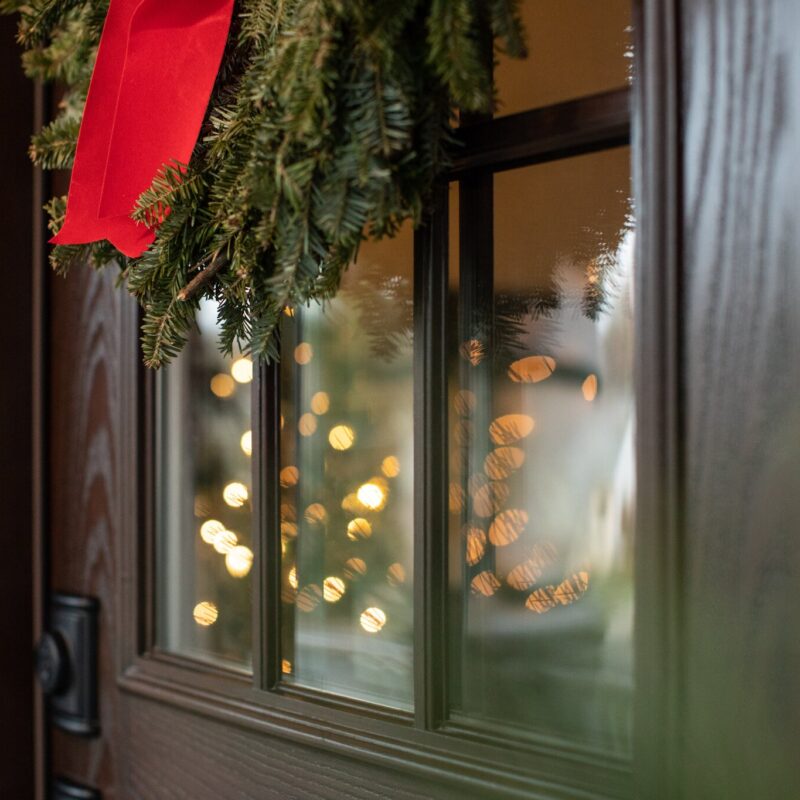Mar 6, 2024
What Type of House Do I Have? 12 Popular Home Styles Explained.
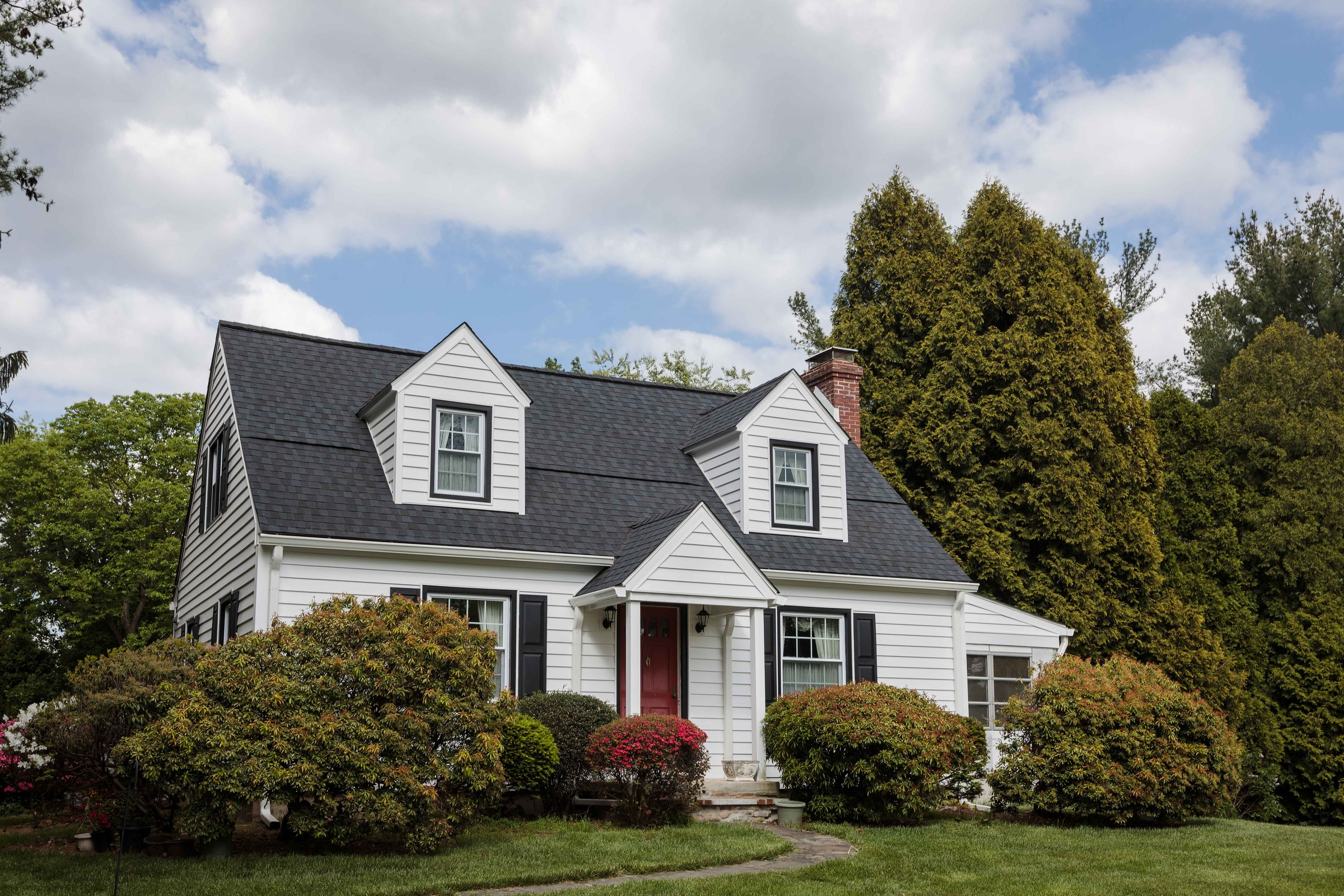
Knowing the architectural style of your house helps you make better decisions about how to remodel or renovate. Chances are you live in one of these 12 popular house styles.
When it comes time to remodel, failing to understand what kind of home you have could lead to making decisions you will regret later. Beauty is in the eye of the beholder, but understanding the basics of different house architecture styles helps you make more informed decisions.
What Are Architectural Home Styles?
Most home improvement experts refer to homes by their architectural style—a set of characteristics and features that make a structure notable or historically identifiable, in this case your home.
There are many different ways to identify architectural house styles, which can take some time to learn. The payoff? Confidence to make remodeling product selections and decor choices.
You can mine archival images of original homes in your style to get inspired, or you might want to review the renovations of current homeowners that have a similar type of house as you.
How to Identify Different Home Styles
Here are three things to keep in mind when defining architectural style:
1. Form is the overall shape and proportions of a home—so, think about whether your home is one story or two story, or if it has a flat or pitched roof.
2. Stylistic detail is about the aesthetic decisions made in the design phase that add character, including columns, trim, or moldings.
3. Construction focuses on how a home was built and what materials were used.
The Most Popular Home Styles Today
Take a drive around any American town and you soon realize there are many different types of house styles, but in the 2020s people tend to live in one of, or a variation of, the architectural styles below.
1. Colonial
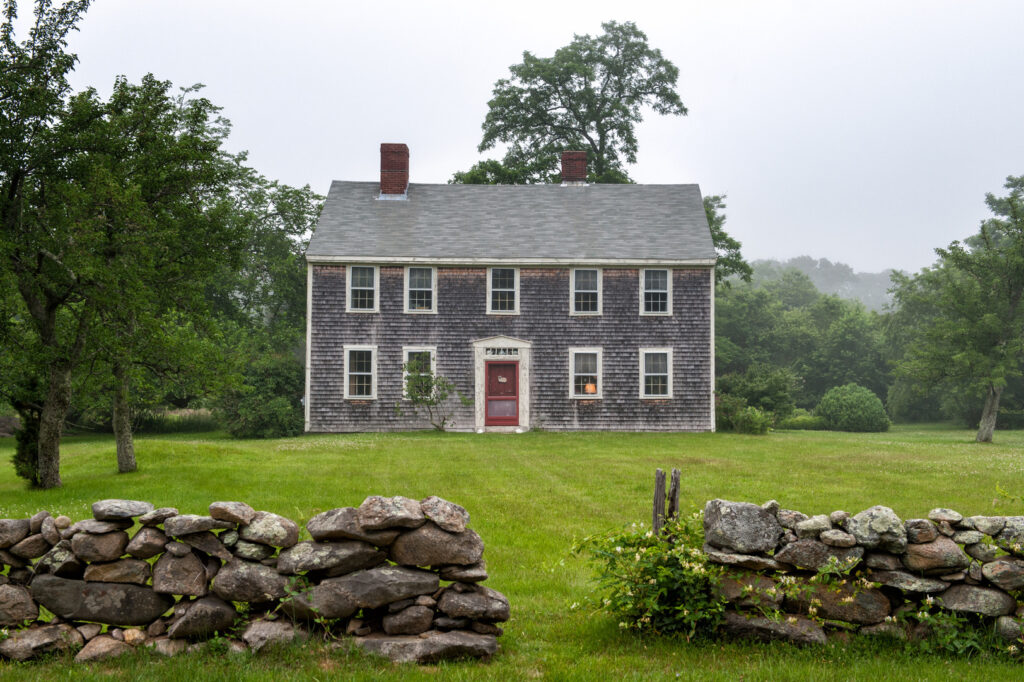
Colonial homes are usually balanced and symmetrical with steep roofs, small porches, and wood, brick, or stone siding.
Mainly found in New England, Colonials were among some of the first houses built in the United States.The title of ‘Colonial’ stems from the time in which the style came to be—quite literally Colonial times. Overtime, they blended into many other styles.
- Style Origins: 1600-1800
- Form: Rectangular shape, a steep roof, and one or more chimneys, two or three stories
- Style: Minimal, the front facade is often symmetrical with a centered front door flanked with sidelites or a transom, central fireplace, some have columns, windows with grids
- Construction: Wood, stone, stone, or brick
- Variations: British Colonial, Ditch Colonial, Spanish Colonial, French Colonial, German Colonial
2. Cape Cod
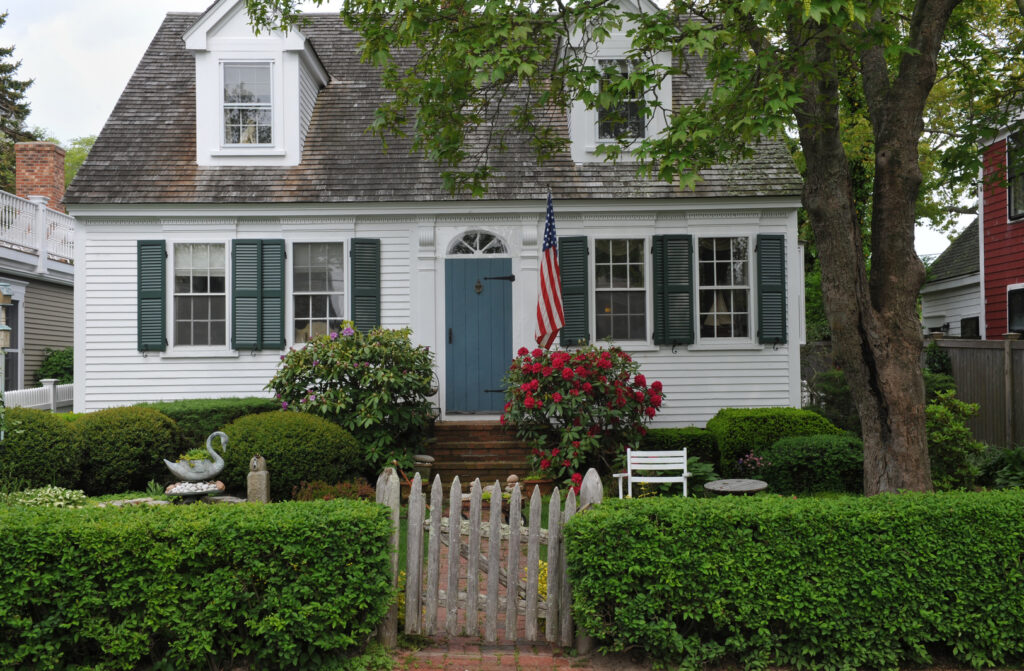
The Cape Cod home style is a low, broad, and plain single or double story building, usually with a chimney.
It was first introduced in Cape Cod, Massachusetts during the late 17th century but had a renaissance in the 20th century. Based on its simple, utilitarian structure, and ease of build, it was an economical and hardy type of home that has attracted many young families.
- Style Origins: 1690-1850, 1930-1950
- Form: Single or double-story, low and broad structure with a pitched gable roof, at least one chimney
- Style: Dormers—vertical windows that project outward from a sloping or steep roof—on the front facade, a front porch, window boxes or shutters, roof gables
- Construction: Typically built with local materials to withstand Cape Cod’s extreme weather—cedar roofing, oak and pine framing and flooring—it’s also common to see low-maintenance vinyl siding used nowadays
- Variations: Full Cape, Three-quarter Cape, Half Cape
3. Victorian
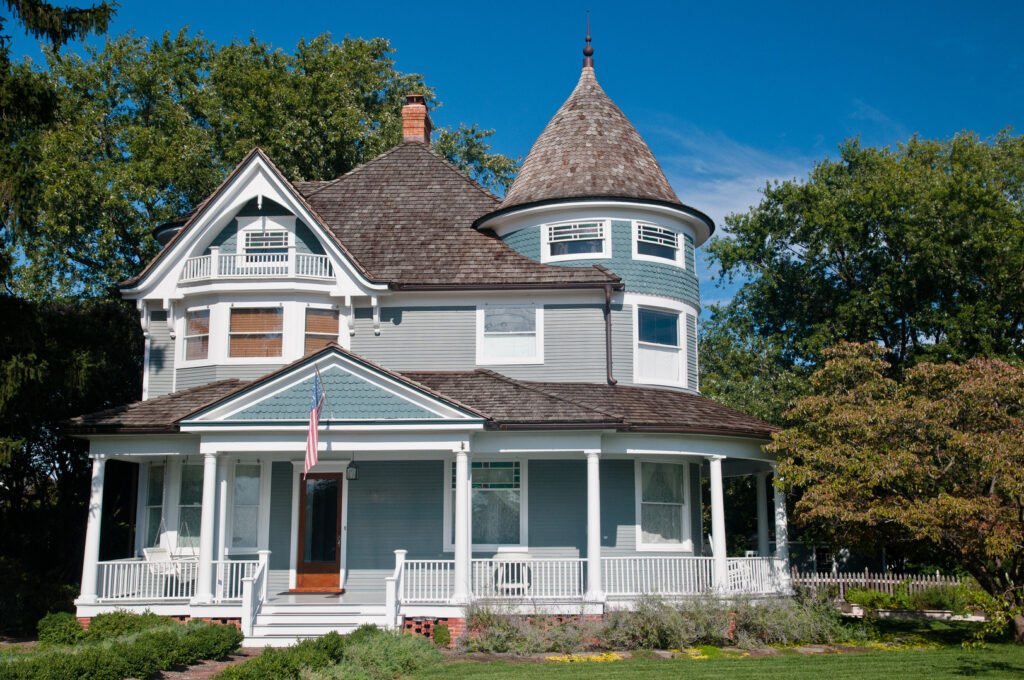
Victorian homes, built during the reign of Queen Victoria of England, are opulent, two or three-story buildings typically made with turrets, towers, and an ornate exterior.
Reflecting the booming economy of the times, Victorian homes are also known as ‘mini castles,’ and the interiors are often as detailed as the exterior, with moulding and many nooks and crannies.
- Style origins: 1830-1910
- Form: An ornate, mini-castle like design, grand homes made up of two to three stories and very tall ceilings, a large tower that flanks either the left or right front facade and creates an asymmetrical look.
- Style: Large, wrap-around porches, decorative and intricate trim work, bright colors, oversized windows, glazed bricks, ornate window sills and lintels, and slate roofs
- Construction: There are many regional variations, thanks to the availability of materials—In the west, an abundance of wood let to many wooden Victorian homes. in the east, the high availability of clay made brick very common
- Variations: Gothic Revival, Italianate, Second Empire, Stick-Eastlake, Queen Anne, Eastlake, Romanesque Revival, Shingle, Folk Victorian
4. Tudor

Tudor homes look like they have been plucked out of medieval history—multi-story homes, heavily influenced by 15th and 16th century England (and named for the Tudor royal dynasty of that era`), with signature half-timbered, stucco siding and brick.
Introduced by architects trained in Europe, Tudor style homes were built primarily for the upper classes, often called a “Stockbroker Tudor” based on homeowners who did well in the stock market of the Gilded Age and the Roaring 1920s.
- Style Origins: 1890-1940
- Form: Steeply pitched gable roof with small dormers, masonry chimneys, ornate doorways,
- Style: Decorative half timbering filled with masonry or stucco, groupings of narrow windows, arched front doors made of solid wood, decorative stone and brick
- Construction: Solid masonry, stucco walls with or without decorative half wood timber, first story brick, second story stucco
- Variations: English Tudor, American Tudor revival, Tudor cottages
5. Mediterranean
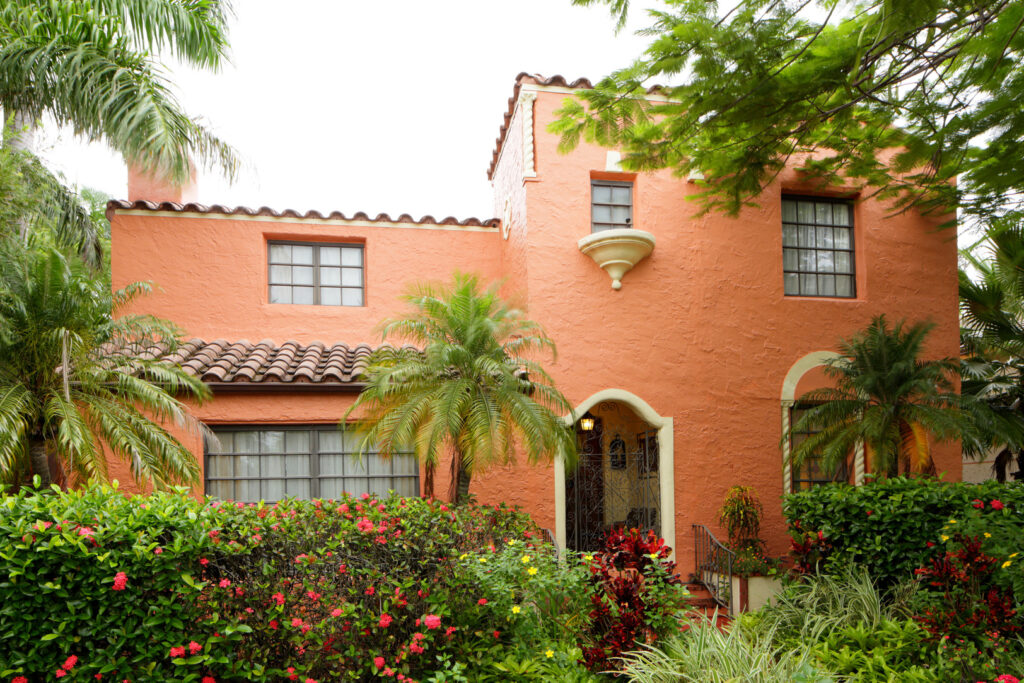
You can spot a Mediterranean-style home from a mile away by just looking at the roof—the shingles are commonly made from terracotta. Other telltale signs? Stucco exteriors and an emphasis on indoor-outdoor living.
A combination of classic Italian and Spanish designs, this style made its way to the United States in the Post WWI booming economy, when New York City became the financial capital of the world. Nowadays, this style is very popular in the South and Southwest, specifically in states like Florida, Arizona, and California.
- Style Origins: 1920-1940
- Form: Low-pitched roofs, one or two stories, designed to let air flow freely throughout the home
- Style: Symmetrical features, arched doors and windows, stucco exteriors, wrought-iron balconies, gardens and fountains, patterned tile, red-tiled roof, emphasis on natural materials
- Construction: Wood, stucco, cement, or plaster
- Variations: Spanish Colonial, Italian villa, moroccan, pueblo, hacienda, mission revival, Neo-mediterranean, Monterey, Spanish Eclectic
6. Ranch
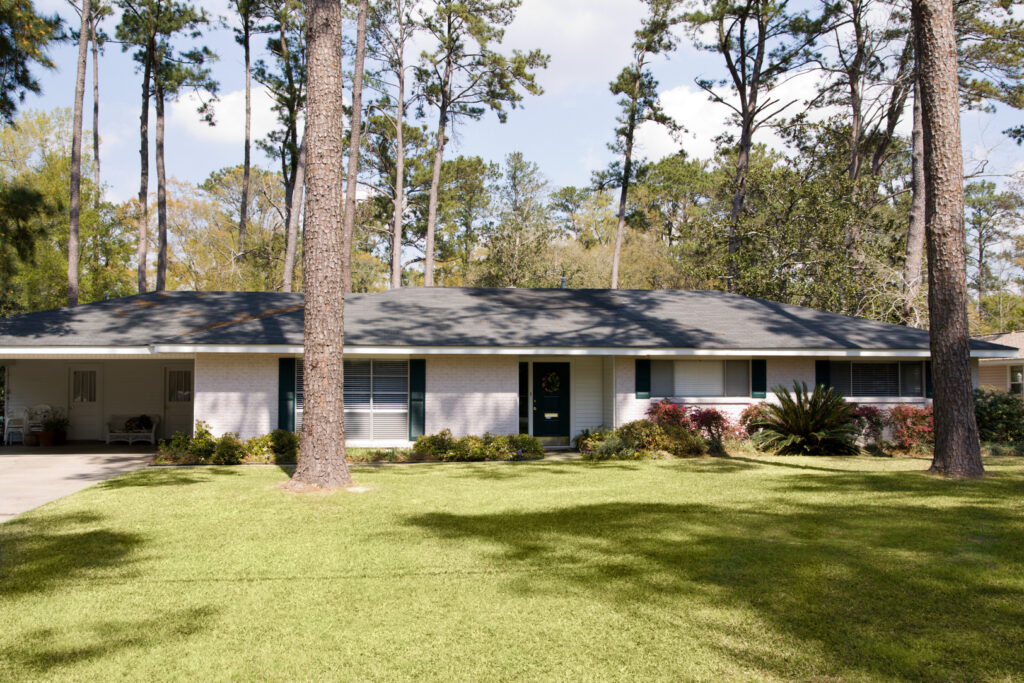
Beyond the single-story dead giveaway, ranches are typically built with attached garages, pitched roofs, and ample room for sliding glass doors and big picture windows.
The Ranch style is synonymous with the Great Depression, World War II, and Baby Boomer Generation. During these times, affordable homes needed to be built quickly to support the growing boomer generation which led to houses being built in bulk, and the rise of developments and suburban neighborhoods.
- Style Origins: 1930-1970
- Form: Single-story home usually in a ‘U’ or ‘L’ shape with a low-pitched roof with wide eaves
- Style: Sliding glass doors, big picture windows, garages, patios, open concept
- Construction: Wood, brick, stucco, cement
- Variations: California ranch, Raised ranch, Suburban ranch, Split-Level ranch, Storybook ranch.
7. Craftsman
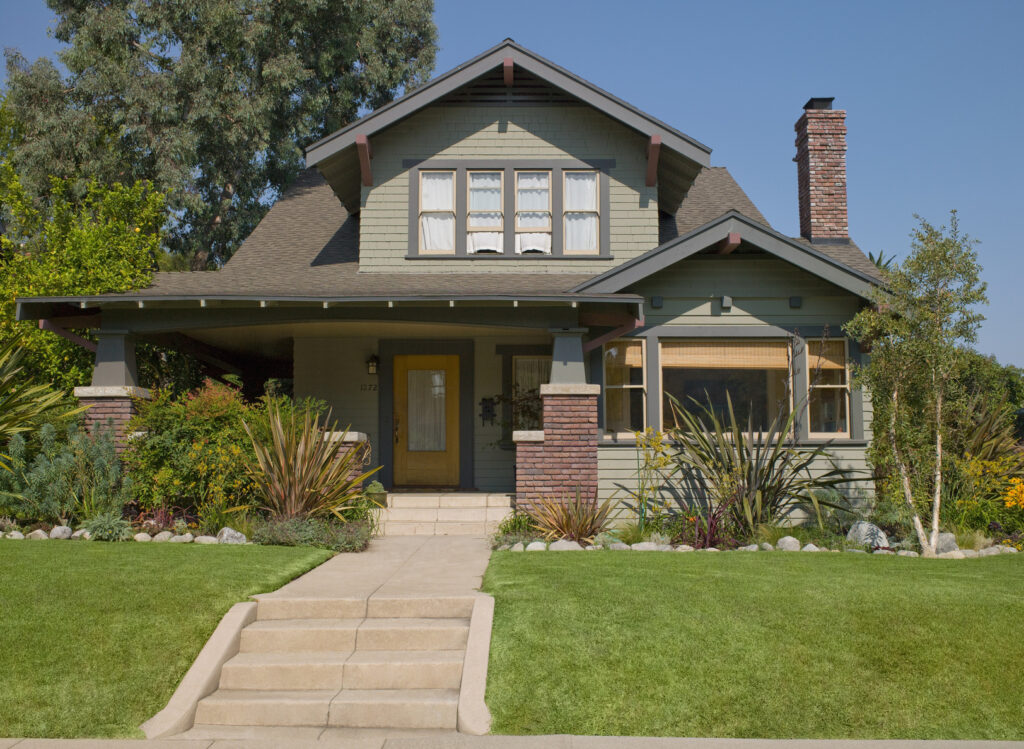
Craftsman home styles can be identified by wide front porches with decorative brackets and large columns that flank the front facade, holding up a low pitched roof. The exteriors are usually built from natural materials like brick, stone, stucco and wood, while on the inside, fireplaces, wood trim, and original built-ins are quite common.
Craftsman homes first became popular in the late 19th century—a backlash against Victorian style homes and the industrial revolution. A magazine called The Craftsman, which sold residential blueprints by furniture designer Gustav Stickley, solidified the style, and Craftsman homes have remained a top choice across the United States to this day.
- Style Origins: 1900-1929
- Form: One to one and a half stories, either symmetrical or asymmetrical, covered wide porches, thick tapered columns, low-pitched gable roof, overhanging eaves
- Style: Large bay and picture windows, window grids, cedar shaker shingles, stucco accents, earth tones
- Construction: Wood, stone, brick
- Variations: Prairie, Mission, Four-Square, Bungalow
8. Bungalow
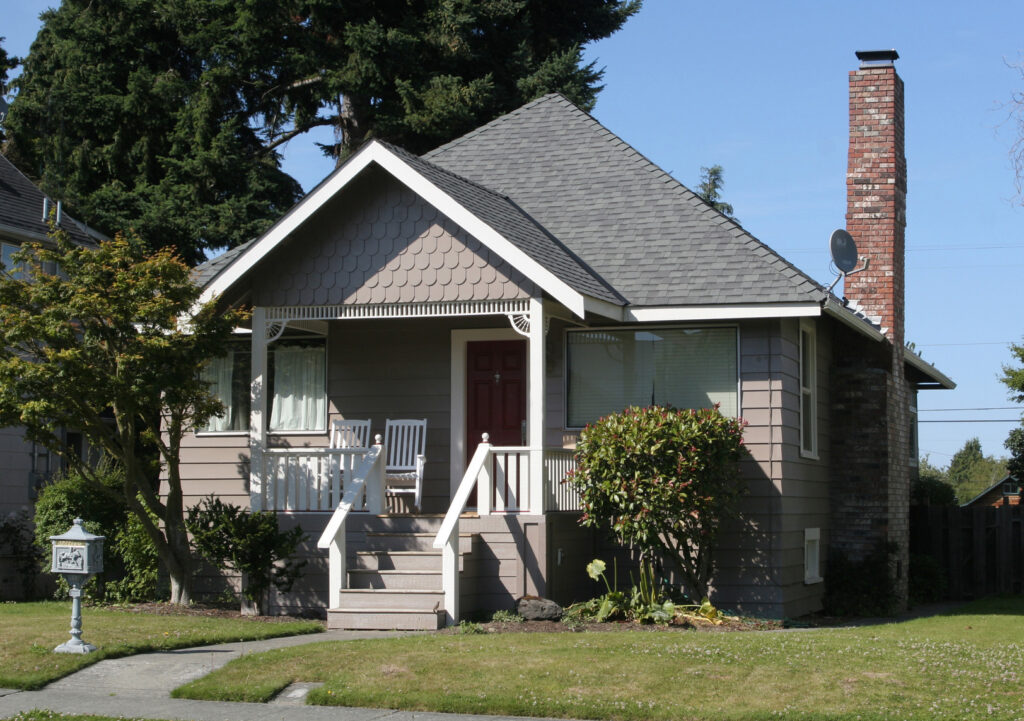
Bungalow home styles are small, affordable, minimal, and they are easier than many other styles of home to renovate. Most are comprised of a single story, however, modern homeowners have created two-story bungalows, where the already existing attic space is flipped into an actual living space.
An offshoot of Craftsman style, the Bungalow has been extremely popular in the United States since the early 1900s.
- Origins: 1900-Present
- Form: One-story, sloped roofs, overhanging eaves, broad front porches
- Style: large front windows, dormer windows, veranda, open floor plan
- Construction: Wood, stucco, shingle siding
- Variations: California Bungalow, Chicago Bungalow, Mission Bungalow, Tudor Bungalow, and Prairie Bungalow
9. Modern
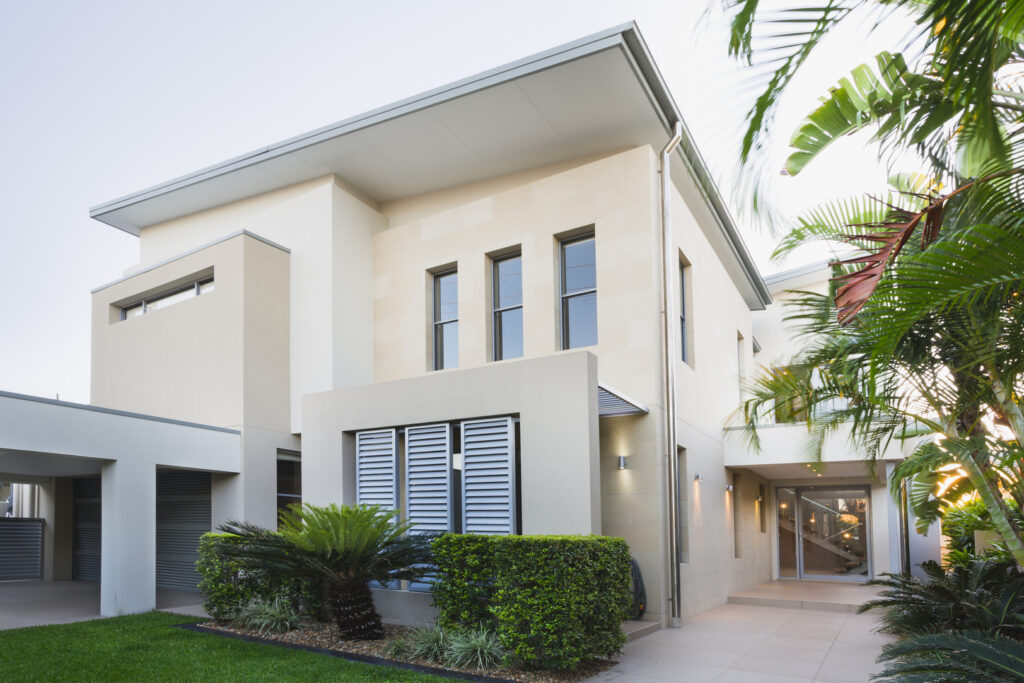
Opposite of the many ornate and detailed styles of the 19th century, lies Modern architecture, which specifically set out to simplify and innovate on traditional home designs with clean lines, sharp angles, a flat roof, and a minimalist aesthetic.
One of the most popular offshoot home styles of Modern architecture is Mid-Century Modern, and one of the most notable influences on American modern architecture is famed architect Frank Lloyd Wright.
- Origins: 1900-1960
- Form: Asymmetrical exteriors, geometric shapes, flat roofs and walls, indoor-outdoor spaces
- Style: Minimal trim, metal accents, expansive glass openings that lean into mixed living with natural indoor-outdoor elements
- Construction: Various woods, metals, and glass
- Variations: Mid-Century Modern, Usonian, Contemporary
10. Farmhouse
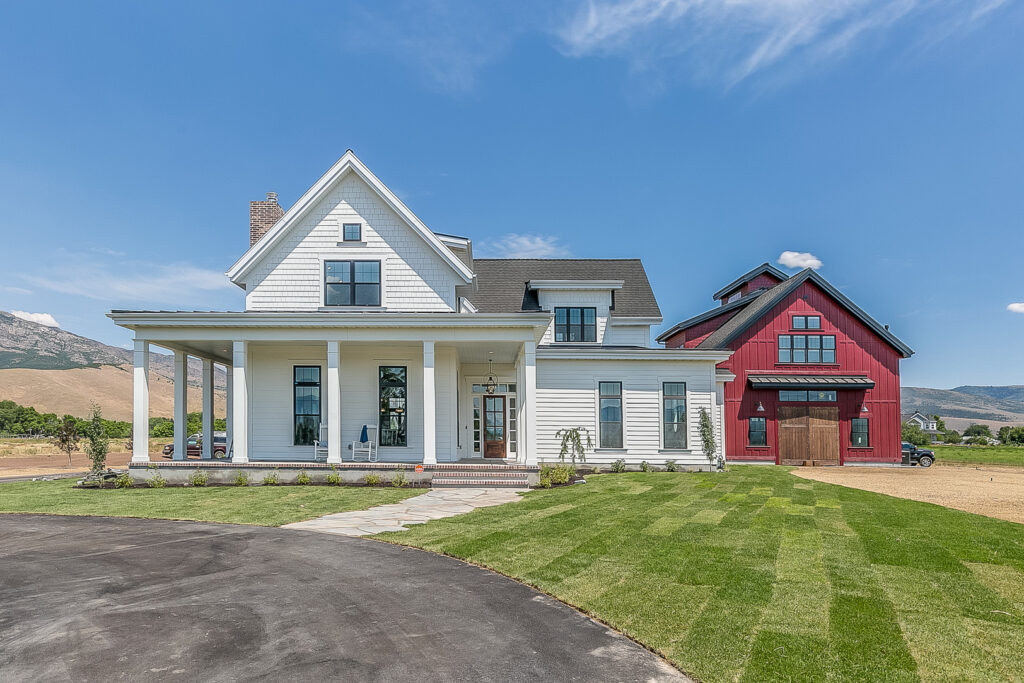
Even though the ever-so-popular farmhouse design started in the 1990s and early 2000s, it catapulted into stardom in 2013 with HGTV’s hit show, Fixer Upper. These homes styles (many of which are painted in a crisp white exterior) showcase an iconic wrap-around porch, and are built with open concept functionality in mind.
Normally situated on an expansive plot of land, farmhouses are simple and rustic in nature given its modeled off of providing comfort to working farmers and their families.
- Origins: 1990s-2000s
- Form: One to two stories, natural building materials like wood and stone, large property lines, oversized porches
- Style: Open concept living, reclaimed wood, shiplap, wrought iron metal, vintage and salvage furniture
- Construction: Painted brick, board and batten siding, and reclaimed wood
- Variations: Modern Farmhouse
11. Cottage
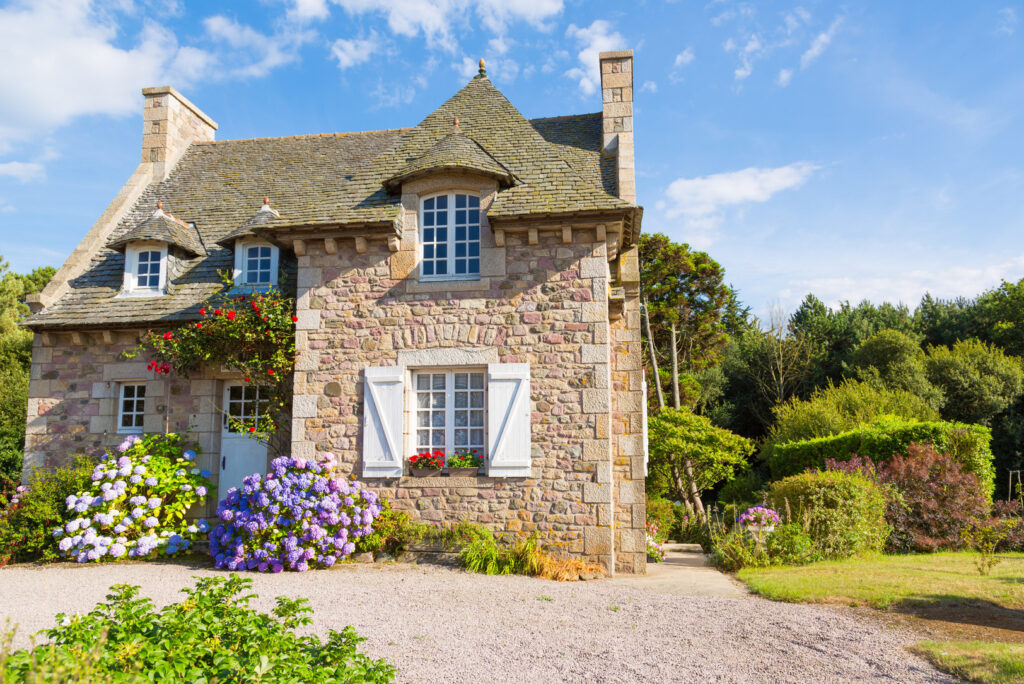
The cottage home style originated some time during the Middle Ages, where farmers who were known as “cotters” used to live in small dwellings known as “cottages”.
Although the style has since changed drastically (long gone are the days of thatched roofs), cottages now have many offshoots (like the bungalow) and can be found in any terrain or geographic location. One characteristic that remains the same: their rustic nature and cozy size.
- Origins: 1400-1500
- Form: Quaint in stature, broad front porches, asymmetrical design, chimneys, sharply pitched roofs
- Style: Weathered cedar shingles, arched doorways, white trim, large bay windows, stone or brick accents
- Construction: Stone, wood, brick
- Variations: English Cottage, Nordic Cottage, Canadian Cottage, French Cottage, American Cottage, Coastal Cottage, Bungalow
12. Greek Revival
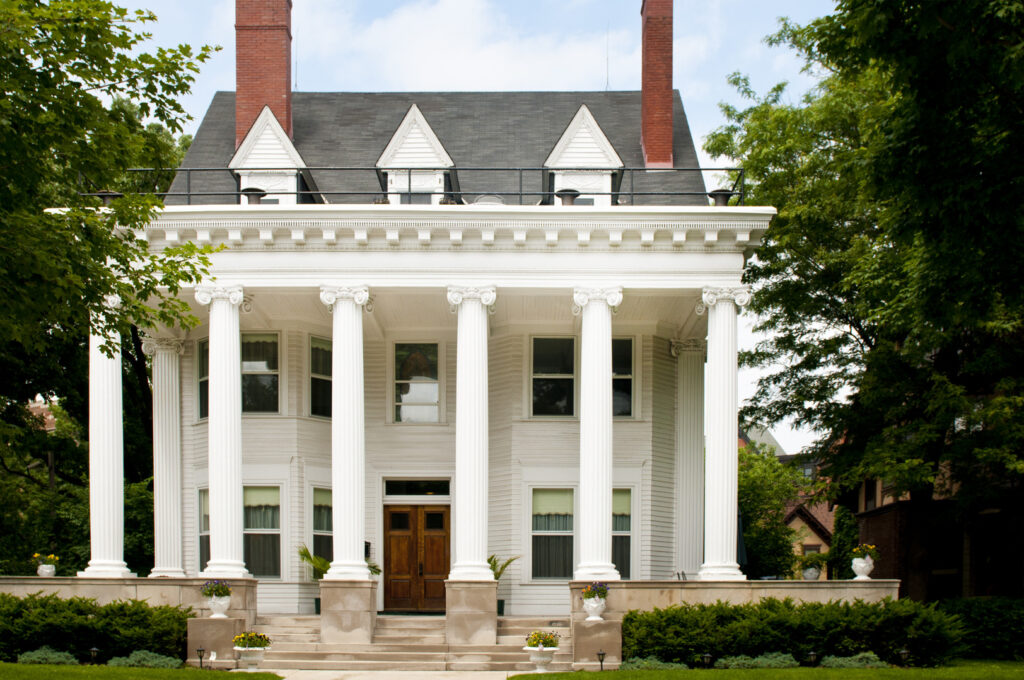
Greek Revival was inspired by ancient Greek temples and the dawn of democracy, embraced fully by 19th-century Americans who embodied that symbolism during a defining time in history.
Common traits seen in Greek Revival styles are symmetry and elegance, with columns lining the front facade as a dead giveaway. Even the exteriors are often painted white to mimic the marble used in ancient temples and buildings.
- Origins: 1825-1860
- Form: Symmetrical front facade, columns, pediments
- Style: Moldings, elaborate front doors, front porch or covered porticos, ornate plasterwork
- Construction: Plaster, stucco, wood, brick, brownstone
- Variations: Federal, Italianate
What Style Is Your Home?
So what style is your house? Take a look at your own home (or one you’re interested in buying) and see which identifying features you can spot.
Looking to renovate? Learn more about our remodeling services.
Back to News